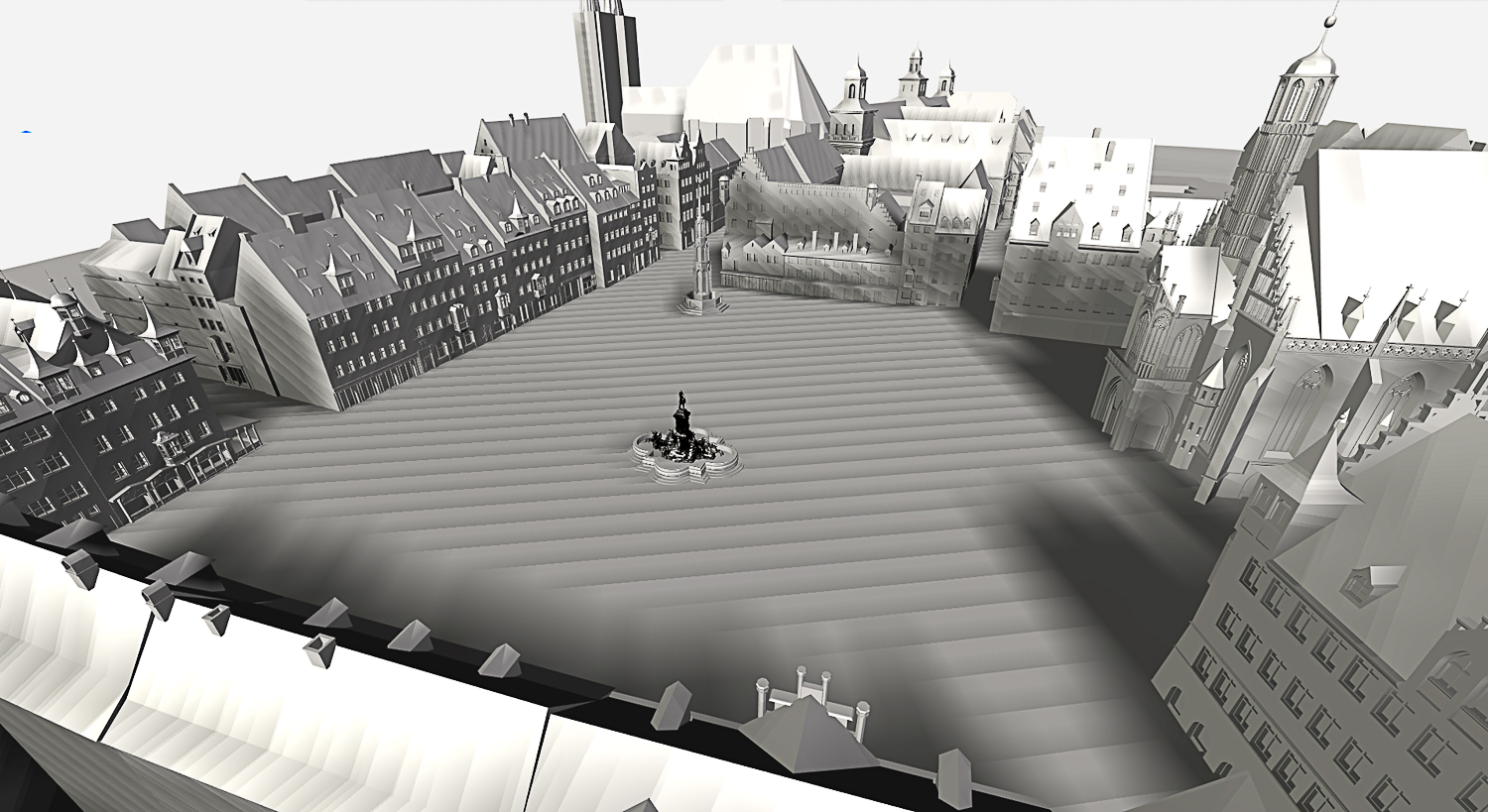The city of Nuremberg was one of Europe’s largest metropoles up until the Second World War, with a superbly preserved historical cityscape that was regarded as a complete work of art. The city was almost razed to the ground by allied bombers in the Second World War. The majority of the historical structures were lost forever and has widely disappeared from the public’s cultural memory.
Between 2015 and 2018 an academic network consisting of the Universities of Greifswald, Cologne and Darmstadt and led by FIZ Karlsruhe - Leibniz Institute for Information Infrastructure developed a digital space-time model for collaborative research based on the city of Nuremberg within the project TOPORAZ - Topographie in Raum und Zeit. The innovative virtual research environment makes it possible to restore, document and visualise the destroyed city. The University of Greifswald and FIZ Karlsruhe’s TRANSRAZ project should expand the technology, knowledge and experience of the preceding research project, and be made available to a broad public for sustainable use.
Three dimensional digital models reconstruct the city of Nuremberg around the Old Town’s Hauptmarkt in four time periods from the baroque era to present day (17th to 21st centuries). The staff members at the University of Greifswald created the database that is connected to the models. They enter source texts that date back to the Middle Ages. They also enter metadata for the large number of illustrations, drawings, photographs and films and link these to the models of the city. This connects the historical sources directly with the locations where they were created and to which they refer in the model. Linking the locations to the information enables the emergence of new knowledge.
The TRANSRAZ project expects to deliver results that can be used in education institutions and museums. It is already possible to create tours of the city that are based on various layers of time and the corresponding city life. An important objective is the interaction with local inhabitants - citizen science. They can use an interactive participation platform and complement their own information. This paves the way for completely new source materials - e.g. photographs from the pre-war period that show the exterior façades or interiors of the buildings prior to their destruction.
‘In the digital age it is of fundamental importance for the humanities to enter into dialogue with external research institutes, in particular those that specialise in information infrastructure. New approaches for collaboration have been and are being gauged in the TOPORAZ and succeeding TRANSRAZ projects. They are making historical knowledge available to students and researchers of today in the most innovative kind of way. Knowledge becomes transparent and remains verifiable. That is vital in the times of fake news,’ says Prof. Dr. Gerhard Weilandt, Chair of History of Art [de] at the University of Greifswald’s Caspar David Friedrich Institute [de].
The Leibniz Association has granted TRANSRAZ funds amounting to € 960,000 for the next three years. The University of Greifswald shall receive € 360,000. The start of the project is planned for March 2020.
Further Information
Media Photo
Contact at the University of Greifswald
Prof. Dr. Gerhard Weilandt
Caspar David Friedrich Institute
Chair of History of Art
Rubenowstraße 2 B, 17489 Greifswald
Tel.: +49 3834 420 3251
gerhard.weilandtuni-greifswaldde
cdfi.kunst.geschichteuni-greifswaldde

